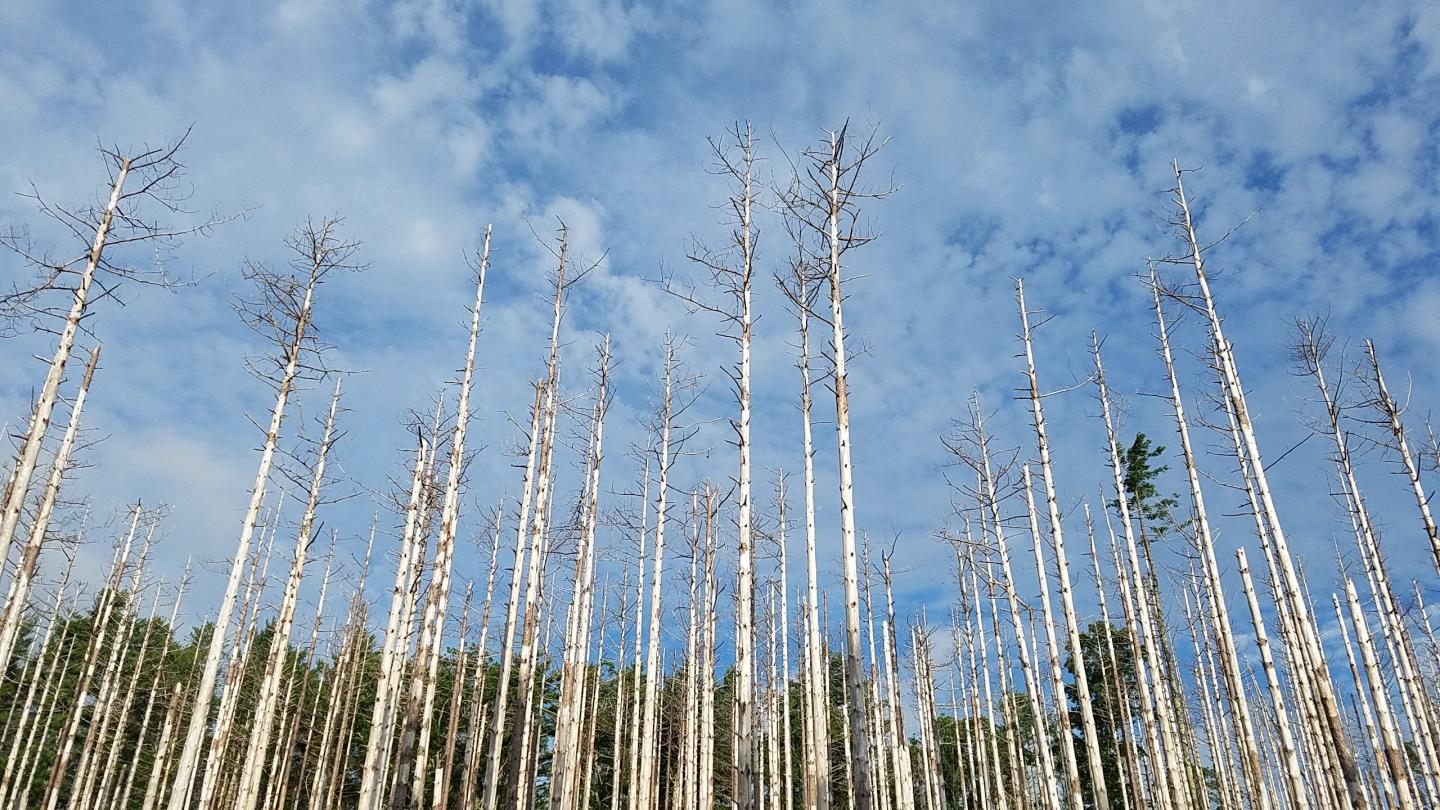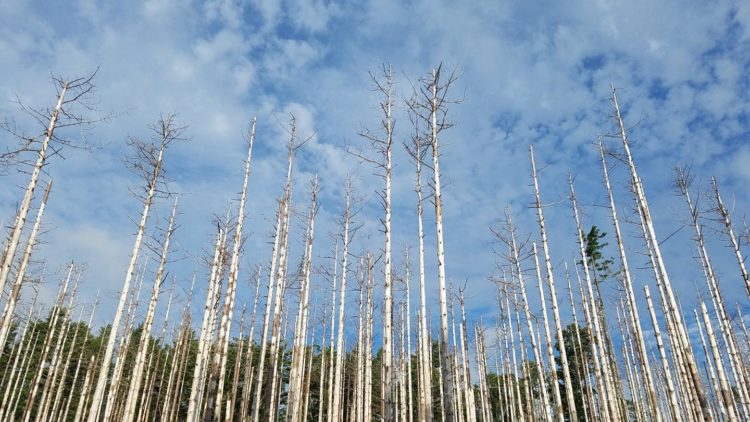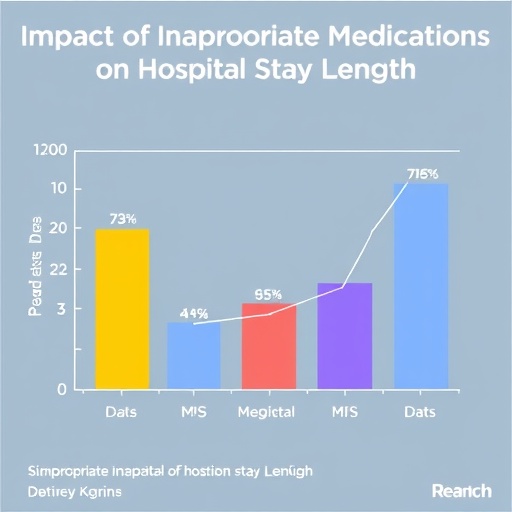
Credit: Jeff Garnas/University of New Hampshire
About 450 nonnative, plant-eating insect species live in North American forests. Most of these critters are harmless, but a handful wreak havoc on their new environment, attacking trees and each year causing more than $70 billion in damage.
The problem is, scientists often don’t know which insect will emerge as the next harmful invader.
A team led by the University of Washington, drawing largely on the evolutionary history of insect-plant interactions, has developed a way to understand how nonnative insects might behave in their new environments. The team’s model, described in a paper appearing Oct. 17 in the journal Ecology and Evolution, could help foresters predict which insect invasions will be problematic, and help managers decide where to allocate resources to avoid widespread tree death.
“What makes the bad invaders so special? That has been the million-dollar question, for decades,” said Patrick Tobin, an associate professor in the UW School of Environmental and Forest Sciences and one of the project leaders. “This has the potential to profoundly change how we predict the impact of nonnative species and prioritize limited resources used to mitigate these impacts.”
The new model can quickly evaluate whether a newcomer insect, even before it gets here, has a high probability of killing a population of North American trees. To use the model, all that’s needed is information about the insect’s feeding method (wood, sap or leaf feeder, for example) and what trees it feeds on in its native range. The model will then determine whether any North American trees are at risk of dying from it.
The research team focused on nonnative insects that utilize North American conifers — cone-producing trees such as pine, cedar, fir and spruce. They identified nearly 60 of these conifer-specialist insects, then built an exhaustive database of information about each one, including life-history traits and characteristics of the trees they attack. Six insects emerged as “high impact,” meaning they have killed large swaths of otherwise healthy native trees.
For example, the balsam woolly adelgid — a wingless, sap-sucking insect from Europe that infests and kills fir trees — has left more than 100,000 acres of dead trees across the Pacific Northwest. Another, the red pine scale from Asia, has decimated New England forests by sucking on the thin inner bark of trees.
So what causes a select few nonnative insects to become the most destructive invaders?
“In the past, research has focused on aspects of the insects themselves, but we realized that wasn’t the case at all,” said lead author Angela Mech, who completed this work as a postdoctoral researcher at the UW.
Whether a nonnative insect takes hold and becomes destructive has more to do with the evolutionary history between the new (North American) host tree and the insect’s native host tree from its home region, Mech explained. Molecular tools that allow scientists to construct comprehensive phylogenies (or maps) of how tree species evolved was key to the team’s breakthrough.
For example, if a pine tree in Asia and another in North America diverged tens of millions of years ago, the North American pine likely wouldn’t have retained defenses against an insect that only lives with the pine in Asia. Alternatively, two pines on both continents that share more evolutionary history and diverged more recently might still share similar defenses.
The new model helps identify the evolutionary “perfect storm” for conifers, where the invasive insect still recognizes the new tree as a food source, but the tree hasn’t retained adequate defenses to keep the invader in check.
“What we did in just two years is what could have taken one person their career to answer, but to have 15 people with insights and expertise sharing, that’s what really led to what we were able to achieve,” said Mech, who will continue this work as an assistant professor at the University of Maine.
The researchers are building a similar database and model for nonnative insects that utilize hardwood trees, such as maple, oak and ash. Both the conifer and hardwood tree databases will be publicly available for other scientists to use.
They are also partnering with the Davey Tree Expert Company to develop a mobile app that a forester could use to determine potential insect threats if a species of tree is planted in a specific location.
###
Co-authors include Kathryn Thomas of U.S. Geological Survey; Travis Marsico and Ashley Schulz of Arkansas State University; Daniel Herms of the Davey Tree Expert Company; Craig Allen and Daniel Uden of University of Nebraska-Lincoln; Matthew Ayres of Dartmouth College; Kamal Gandhi of University of Georgia; Jessica Gurevitch of Stony Brook University; Nathan Havill and Andrew Liebhold of the U.S. Forest Service; Ruth Hufbauer of Colorado State University; and Kenneth Raffa of University of Wisconsin, Madison.
This research was funded by the U.S. Geological Survey’s John Wesley Powell Center for Analysis and Synthesis, the Nebraska Cooperative Fish and Wildlife Research Unit, the University of Washington, U.S. Forest Service, National Science Foundation and the National Institute of Food and Agriculture.
For more information, contact Mech at [email protected] and Tobin at [email protected].
Media Contact
Michelle Ma
[email protected]
206-543-2580
Related Journal Article
http://dx.






